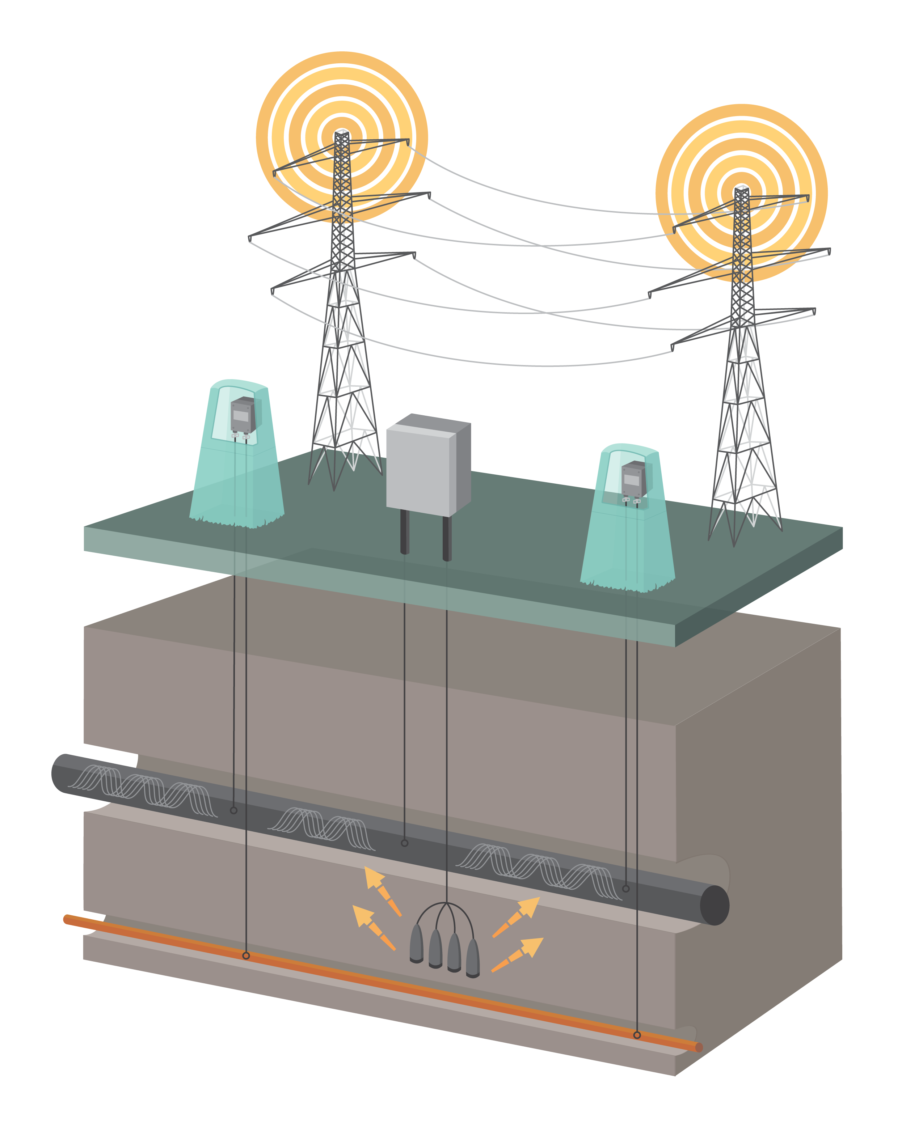Technical Article
What Are Solid-State Decouplers and How Are They Used?
Solid-state decouplers are widely used in the energy industry. But many people don’t understand what they are, how they function and the many ways in which they can be used. This article will arm you with a basic understanding of decouplers – in layman’s terms.
Cathodic Protection
DC Decouplers are often used in conjunction with Cathodic Protection (CP) systems, which are commonly applied on underground pipelines or other metallic structures to prevent galvanic corrosion. A CP system provides corrosion protection by applying a low voltage negative DC bias to the structure. However, required safety grounding systems connected to the structure short this CP current to ground and can compromise the efficiency of the CP system.
Decouplers simultaneously perform two needed electrical functions: DC isolation and AC grounding. Installed between the protected structure and the grounding system, they isolate, or block the flow of DC current (from the CP system) to the grounding system or other equipment, thereby eliminating any negative influence on the CP system caused by the grounding system or neighboring equipment. Yet decouplers also provide safety grounding protection from AC faults and lightning.
How Do Decouplers Work?
A modern decoupler consists of solid-state electronics in parallel with a large capacitor. The solid-state portion acts like a switch (but without any moving parts) that remains open during normal operating conditions to prevent DC from passing and automatically closes during over-voltage conditions, such as AC faults or lightning. When the over-voltage condition passes, the device opens back up and continues to provide DC isolation. The capacitor allows steady state AC current to pass continuously with very low AC voltage drop.
What Protection Do Decouplers Provide?
AC fault protection: AC fault current generated by a failure of nearby equipment is a safety hazard. This AC current can be transmitted via the pipeline, endangering nearby workers, or causing damage to your pipeline. When an AC fault occurs, the decoupler instantly conducts fault current to ground, carrying AC current away from the pipeline and lowering the AC voltage on the pipeline.
Lightning protection: When a lightning strike occurs, it can present a safety hazard to personnel and pose a risk to nearby pipelines. The decoupler behaves in the same way as it does during an AC fault. It safely channels the high voltage current of the lightning to ground, protecting nearby workers and the pipeline. As soon as this event has ended, the decoupler automatically switches back to its DC isolation/cathodic protection role.
Mitigation of induced AC current: Many pipelines are buried along a shared right-of-way with overhead high-voltage power lines. Even during normal operating conditions, current from these power lines induces AC current in the nearby pipeline. This is not only a safety hazard to workers but can also cause corrosion issues. Decouplers such as the PCRX, PCR and SSD are designed to continuously conduct induced AC current to ground, mitigating this risk while simultaneously isolating your CP system.
The sketch below illustrates how decouplers are applied to AC mitigation systems.

A zinc or copper mitigation wire is laid next to the buried pipeline and is electrically connected to it. The job of the mitigation wire is to safely channel induced AC to ground and reduce the AC voltage on the pipeline. But this creates a challenge for cathodic protection: Because the mitigation wire is electrically connected to the pipeline, the cathodic protection system must now protect both the pipeline and the bare mitigation wire, which requires significantly more CP current and may result in inadequate cathodic protection of the pipeline.
Installing decouplers between the pipeline and the mitigation wire, as shown, isolates the two during normal operation to ensure proper cathodic protection, while simultaneously providing safety grounding and mitigation of induced AC.
Other Electrical Applications
In addition to buried pipelines, decouplers are used to provide similar protection in numerous other applications, including:
- Decoupling tank grounding systems
- Decoupling electrical equipment grounding systems
- Insulated joint protection of pipelines
- Airport fueling systems
- AC voltage mitigation
- Decoupling from utility grounding systems
- Marine galvanic isolation
- Stray voltage mitigation
- Decoupling power cable sheaths/casings
- Gradient control mat decoupling
To learn more about these applications, please click on the links above. For a more detailed introduction to decouplers, please view our Decoupler 101 video series.
Questions?
Please contact Dairyland using our contact us form or at (608) 877-9900 with any questions about solid-state decouplers, cathodic protection or over-voltage protection.
Want To Dive Deeper?
Join One of Our Learning Events.
Our event schedule provides you the in-depth product and application training you need to correctly apply Dairyland products.